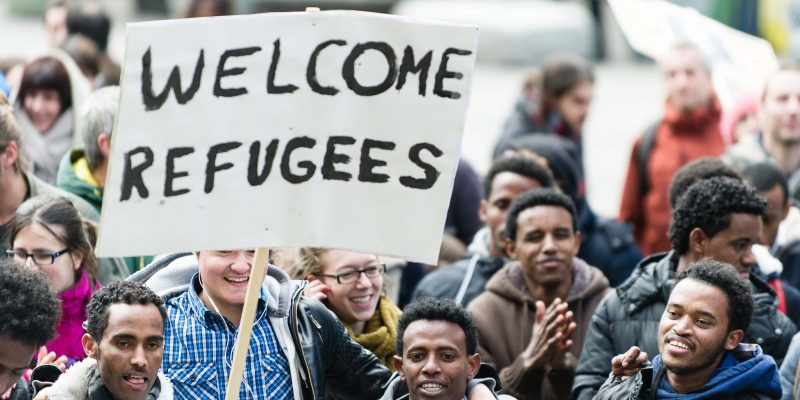1. New report dismantles allegations against rescue ships
As the NGOs rescue thousands more migrants out at sea and the Libyan Navy makes more accusation against them (while pushing back hundreds of people), researchers at Forensic Oceanography have scientifically dismantled the allegations using maps and data. Read Annalisa Camilli’s article in Internazionale and Lizzie Dearden’s report in the Independent (as well as our own in-depth analysis).
2. Refugees in Italy: Lost in translation
Rose Foran and Anahi Ayala Iacucci’s report for Internews explains how migrants and refugees arriving in Italy face inadequate access to communication, and how rights end up getting lost in translation. A must read.
3. More and more Bangladeshis arriving in Italy
The last year has seen an impressive increase in the number of Bangladeshi nationals arriving in Italy via the Libyan route. Diego Cupolo’s in-depth article for Refugees Deeply explains why Bangladesh is now the single biggest country of origin for migrants crossing the Mediterranean on boats.
4. Europe’s child refugee family reunion system is failing
On paper, asylum-seeking minors with relatives in other EU countries are entitled to be reunited with them, but it rarely happens in practice, and when it does, it takes an unnecessarily long time. Elaine Allaby’s article for Al Jazeera describes the gap in the system that is leaving thousands of young refugees lost in the world.
5. The forgotten children of Calais
Months have passed since the “final demolition” of the Calais refugee camp: “Jungle finish”, they said. Obviously, however, the humanitarian emergency cannot be solved by an evacuation, and many people have been left behind, including many minors. Read Aisha Gani’s report for Buzzfeed on the forgotten children of the “Jungle”.
6. The digital footprint of Europe’s refugees
Smartphones are essential tools for people on the move; they are used to acquire information and contacts necessary to pursue their journey. At the same time, digital footprints left by refugees provide valuable insight into migrant flows, as shown by a new analysis by the Pew Research Center, which examined Google search trends to map the movements of people transiting from the Middle East towards Europe.
7. We really need to talk about climate change and new refugees
Climate change causes forced migration: this is a fact. It then becomes necessary to expand our definitions as soon as possible, since the categories of “migrant” and “refugees” fail to grasp new diasporas (as Saskia Sassen has explained).
Jennifer Duncan and Ashley Toombs’s analysis in Refugees Deeply provides context to this phenomenon and offers a few recommendations for policy-makers (who need to act now, because we can no longer wait).
8. The consequences of climate change in the US, today
For those who are sceptical about the link between climate change and forced migration: several territories in the US are already at risk of disappearing, their populations forced to choose whether to move or perish. And federal funding is not nearly enough. Neha Thirani Bagri’s article in Quartz tells about two communities, Isle de Jean Charles, Louisiana and Newtok, Alaska, competing for relocation funding.
9. Open your home to refugees with Airbnb
Airbnb’s Open Home platform is now live, with a 5-year goal to provide free short-term housing to 100,000 people in need. The idea is simple: getting people to open up their hearts, and their homes, to refugees. Read the article in Fast Company.
10. What my eyes have seen
How do you document the refugee crisis and the tragedy of thousands of people on the move? Photographer Giles Duley has recorded some of their stories in pictures.
Translation by Francesco Graziosi.
Header photo: Gustave Deghilage (CC BY-NC-ND 2.0).









